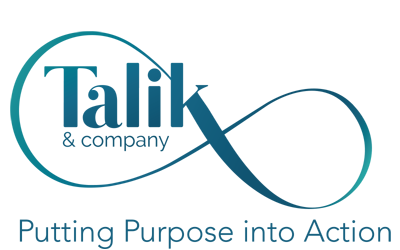Have you ever been on a march or a rally? It can be quite an intoxicating feeling, walking side by side hundreds if not thousands of others. All of you heading in the same direction with a common intention – it might be highlight climate change, in support of the #MeToo movement, or for many other social or political causes. It is perhaps one of the few times we find ourselves united around a common purpose.
There is a Japanese phrase, used in Buddhism, itai doshin, which means “many in body, one in mind”. The 13th Century monk, Nichiren, wrote,
“If itai doshin (many in body, one in mind) prevails among the people, they will achieve all their goals, whereas in dotai ishin (one in body, different in mind), they can achieve nothing remarkable.”
In my work as an organisation consultant and coach, I see a lot of teams and organisations that are decidedly in dotai ishin. Whether this if from a lack of or a confusion of the vision, values, ethics, mission or purpose, the underlying issue is often around a failure to unify around a common intent.
What precipitates this is often a misunderstanding of organisation culture and the belief, that by defining it one changes it. Edgar Schein’s iceberg model is a timely reminder that the “how we do things round here” is deeply rooted in the patterns of meaning created by trying to make sense of espoused values and themes and their actual manifestation in behaviours and conversations. Many organisations, particularly mechanistic or Command and Control ones, often develop “work arounds”, “blame avoidance” and other coping strategies to keep things going.
Professor Joanne Martin of Stanford University goes further, concluding that there is rarely one unifying culture in an organisation. Every site, every department, every team will have developed their own rules, their own “work arounds” and accepted behaviours. An organisation is therefore an amalgam of many diverse, sometimes collaborative sometimes combative, cultures.
This rings true to me from my experience. Organisations are made of people. People are diverse – it is one of their strengths. And with that comes diverse views, diverse styles of working. In our ever-connected world, life, and not just organisational life, is becoming more complex. Mission statements and declarations of company values are well intentioned but often ignore what is really happening in the organisation, what people do and think. And when these statements are given from on high by the executive, it is easy for those beneath or at the side-lines to think, “Yeah. Nice words. But its not how it works round here.”
If italic doshin is our desired outcome, it means we must find a different approach to finding a common purpose around which everyone can unite.
This is a question of adaptation not of technical or process re-engineering. As the pressures of society, technology, and economics assail us all, those who do not face up to the challenge of change and adapt will fail. Just look at Nokia and Kodak – two infamous examples..
And, as Schein, Martin and many others remind us, culture develops over time. It is an accretion of call and response and sense-making within.
I would go further to say that it can best be achieved through an emergent, inquiry-based approach. People rarely like to be told how to think or feel. Asking them how they think and feel, and then engaging them in wider conversations with others recognizes both the similarities and the differences. Recognizing both is vital. Individuals need to be heard and respected. From an open sharing of and inquiring into views, a common understanding and a unifying intention and purpose can emerge.
In a rapidly changing world, this is more important than ever. As my colleague, Dr Alexandra Stubbings recently wrote in an article about the new world of AI,
“Connecting to purpose is how we remain relevant and resilient. It requires finding out what matters to us personally, finding the intersection between the social and environmental challenges you can see – of which there is no shortage and many will be in your backyard – and the value you can bring to them through your skills and expertise. You don’t need to wear a cape and tights (that’s optional, your call), it could simply mean questioning how you do what you do today and adjusting course to ensure the results of your efforts are net positive for the people and the world around you. My hunch is that it’s in asking ourselves these questions, and doing this work, that we’ll prove relevant and resilient for the long-term, and give ourselves less cause to be worried.”
Itai doshin means many in body, one in mind. It does not mean that we all must think the same thing but that we need to be moving in the same direction with a shared purpose.
And we need that now more than ever.
References
Organizational Culture and Leadership: Edgar H. Schein.
Jossey-Bass business & management series originally published 1985, third edition 2004
Connecting to purpose in a world of bots. Why finding the human matters in the AI age: Alexandra Stubbings, 2018. Article for AB Communications.
Organizational culture: mapping the terrain: Joanne Martin. Sage Publications, 2002



